

Most modern video games focus on a journey with an inevitable end. In Dragon Quest, once you beat the final challenge you’re done. The game is finished simply because there is nothing left to do. Eventually, developers starting throwing in techniques that improve a game “Replayability”, a term that describes the additional time one spends playing a game even after it has been completed. More time spent in a game improves the player’s loyalty with the company, which also ensures them investing in further sequels.
This “Replayability” came in many forms, such as completing the Pokedex in Pokemon Red and Blue. Other games went a step further and developed a crafting system that allowed players to combine items they find into better items. This acted as a collectible system but also ensured that each replay of the game would be different. Tactics Ogre for the SNES (Later remade for the PSP) featured such a system. Each battle would reward the player with random rewards, some of which could be used to create new items. Some players might be able to get parts for better swords while others get better bows. This leads people to alter their party to best utilize their armory. As this concept grew, more and more games started using it. Some titles, such as the Atelier series, are all about crafting items and selling them.
MMOs took from this and brought it to a whole new level. Ragnarok Online featured two main crafting professions. The Blacksmith was able to craft weapons and armor using items obtained from monsters. These arms would sometimes prove to be more powerful than even ones obtained in stores and from enemies. The Alchemist would be able to craft potions that recover health, restore mana and provide buffs. Although one-time potions that expire in a matter of minutes don’t seem as flashy as shiny swords, Alchemist values quantity over quality and still makes a profit.
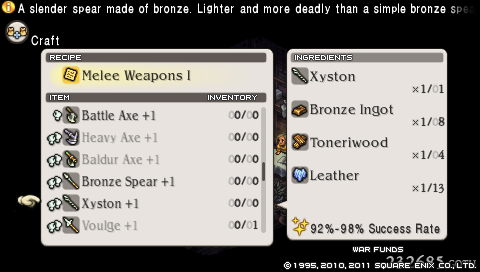
The success rate thing was rather odd, seeing as you could just reload your game
What’s different between Ragnarok and Tactics Ogre is that rather than selling items to computers, players are now selling items to one another. Money starts to get spread around and create a type of economy. The idea is simple. Let’s say we have two players, one is a swordsman type class and the other is a crafting class. The swordsman can easily kill monsters and obtain money and items. They can then sell the items to the crafting class, who in turn will create fancy weapons to sell back to the swordsman. This is how the crafting class turns a profit, because unlike the swordsman, the crafting class cannot fight easily. Or so this is the intention. Most of the time, it proves to go horribly wrong.
Greed and stupidity seem to go hand in hand, unfortunately guiding many players in MMORPGS. Many times I have seen auction houses in games looking for a specific item, only to see offers values at ungodly amounts of gold. Economies in F2P games are inheritably flawed. What was devised as a perfect trade and barter by developers will always succumb into oversaturation and overpricing of items. I bring this up because for some people, this is too much. They want to be able to craft the best items, but also want to fight. So, why not do both?
Lineage 2 featured a Dwarven race. They also happened to be the only ones who could craft good items. When I played, I would often see a powerful warrior decked out in armor being chased by a poor dwarf wearing nothing but a cloth tunic. These people were doing a technique called multiclients, which is basically opening up two copies of the same game. By doing this, they had access to their own crafting class while also being able to fight. The cost for this was big, as it would take twice as long to hit the max level. On the plus side, they would be able to focus their Dwarf entirely on crafting skills. They’d be horrible for battle, but would have access to the best crafts.
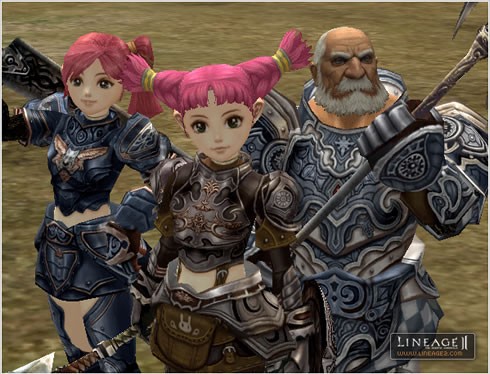
Don’t get me started with the sexual dimorphism of Dwarves.
All in all, most crafting systems are complete messes. It will always be this way as long as players have access to multiple character slots and accounts. The best way to fix this insanity is to remove it all together. Instead of having designated crafting classes, allow everyone to be able to craft. Final Fantasy XI did this well. Everyone was able to learn a wide assortment of crafts up to level 60. After that, they had to focus on one at hand. The benefit to this is that it takes nothing away from your fighting capability. And since everyone could craft, the price of items became even. Having a subscription fee also helped, as people would no longer multiclient to abuse the system. It had its own weird nuances. In order to increase your chances at a successful craft, players had to only craft on certain days, at certain hours and had to face certain compass directions.
My biggest peeve when it comes to crafting systems is what is universally known as “critical success”. Sometimes when crafting an item, the game for whatever reason will provide a larger bonus to your item than others. This was most apparent to me in a game called Wakfu. This game does a different take on economies, focusing entirely on trade and barter. Money could still be made, but even that had to be crafted for the most part. Players have access to a wide variety of harvesting and crafting professions. Maybe a bit too much in fact. The amount of time one has to spend to max out even one profession is ungodly. That’s free to play MMORPGS for you. Much like Final Fantasy XI, since everyone has access to the same professions, prices are fairly neutral. Many items are outclassed by monster drops, but some shine bright. Some even brighter than others, as is the case with those crafted with a critical success. The problem with a system like this is that it immediately devalues all the inferior types. A default Goultard (It’s a sword) comes with a debuff, but one made with critical success lacks the debuff entirely. In an attempt to craft one without a debuff, numerous amounts of inferior Goultards are made with no one buying them. Wakfu’s economy is based entirely on exchange, but the saturation of inferior Goultards puts a halt to that. The person that spent the money creating the Goultard is not seeing a return, thus harming the cycle.
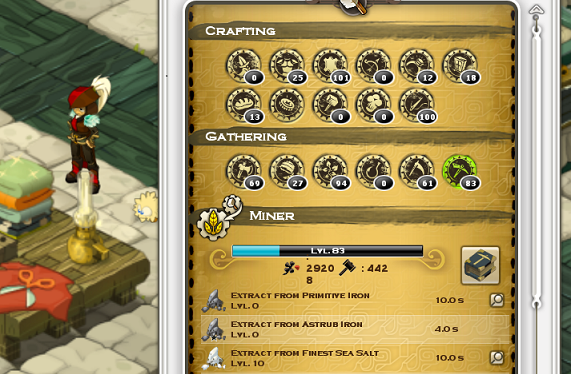
that “2920” number represents how many times this player has mined a node. Each node takes 10 seconds to harvest. This player has spent nearly 8 hours watching his avatar chip away at rocks. That’s just for one profession.
My favorite crafting system in any MMORPG also happens to be the most tedious. When Guild Wars 2 was released, it offered a simple crafting system everyone could use. There are 8 different crafting disciplines, all of which offered different types of weapons and items. Unlike FFXI, there was no limit to specializations. All disciplines had a level cap, with only two being enabled at a time. If the player wants to change their discipline, they can do so for a low cost while also retaining all levels as they left them at. Crafting the actual items came in the form of utilizing harvested items obtained from mining nodes, fallen trees and other sources, as well as drops from monsters. Either way, it is all kept very neat and clean. For harvest materials, the list contains cloth, leather, metal, wood and gemstones. They are featured in multiple tiers. The further you progress in the world, the better access you have to later tiers. Monster drops, also known as “Fine crafting materials”, also came in a tier list with their only being 8 main categories. These items would dictate the type of bonus the weapon would have. There are other types of crafts, such as plants that can be turned into meals and stones that can be turned into runes. The problem with this setup was that until you reached the end levels of your crafting discipline, every item you made was worthless compared to the items given to you by quests. No other player would buy them, so they had to be sold to merchants for a fraction of what was spent making them. At the same time, there was also little money to be made selling the best gear simply because everyone was making their own gear. Classes would most likely focus on the professions that best suit themselves, so the demand was being filled by itself. Guilds and friends also existed to circumvent costs. If you had the crafting items, anyone would be glad to make what you wanted.
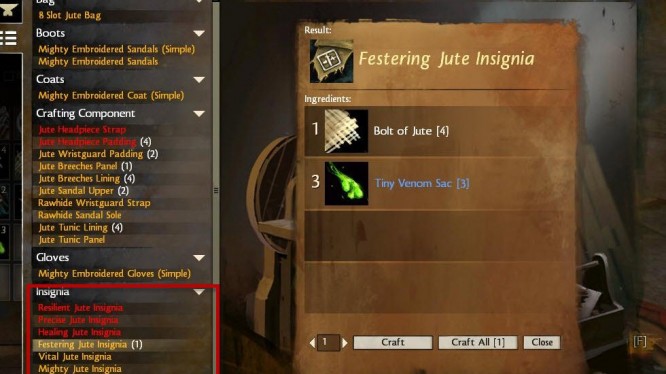
Guild Wars 2 kept things simple and clean
Crafting will always be a confusing topic to deal with. It was always a great idea, but logic does not usually work well in online games. Developers want crafting to be tied into economies, but I have yet to see a successful case of that happening. Guild Wars 2’s appears perfect on the outside, but has such little impact on the economy. If only there was a way to have Ragnarok’s crafting classes combined with Guild Wars 2’s crafting system, but also somehow make it so players could only ever have one character at any time. It’s just seems impossible.
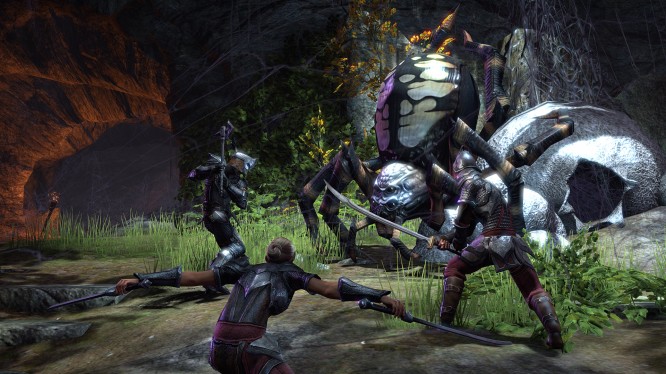


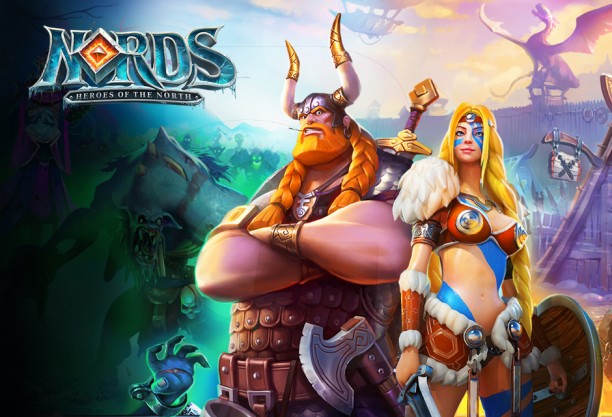
 Eorzean Evening Post: Heavensward Review Part 1 .
Eorzean Evening Post: Heavensward Review Part 1 . Top MMOs of 2014...So Far .
Top MMOs of 2014...So Far . World of Warcraft: Legion Alpha First Impressions .
World of Warcraft: Legion Alpha First Impressions . World of Tanks: How to Protect Your Tanks in Battle
World of Tanks: How to Protect Your Tanks in Battle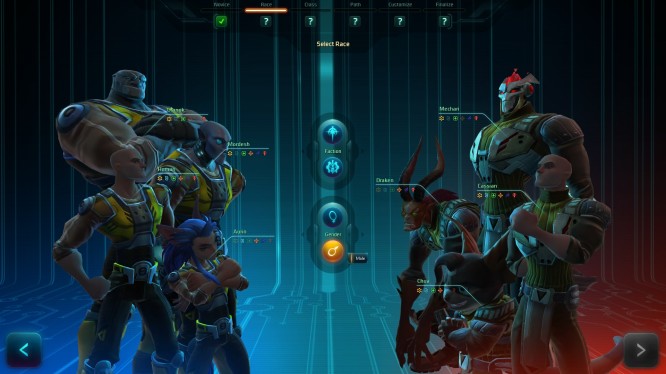 WildStar: Reloaded and Why You Should Give It Another Chance .
WildStar: Reloaded and Why You Should Give It Another Chance .